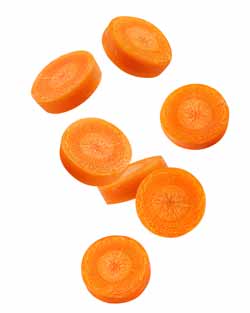Among all the organic foods available to the consumer, the organic carrot is at the top of the list for nutritious and flavorful vegetables. Averaging about $1 to $3/per pound, organic carrots are an economical dietary choice for the consumer and can be found in any supermarket or local grocery store in the organic foods or produce department. They can also be found anytime of the year in the frozen organic foods section in most stores. Often, specialty food stores can be a great place to find carrots of all varieties and colors, ranging from white and yellow to blue, purple, red and , of course orange, find more info.

According to the label on a 2 pound package of “Newman’s Own Cut and Peeled Baby Carrots (organic)”, a 3 oz serving contains 1 gram of protein, 2 grams of dietary fiber, and 270% of the daily recommended allowance of vitamin A. Of course, carrots contain high amounts of beta-carotene, which is converted to vitamin A by the body. The blue varieties of carrots even contain anti-oxidants much like blueberries. The medicinal qualities of this tasty root crop have been known for centuries, helping with digestive problems and improving eyesight. These sweet treats have been documented to help prevent tooth decay and have even been used for lung cancer.
In the wild, the carrot has many relatives. In the eastern U.S., queen anne’s lace, a variety of wild carrot , can be found growing in meadows and fields as well as gardens. The feathered and fine foliage of the top of this plant is a distinguishing characteristic of this parsnip kin. The tops of the organic carrot are also edible, having a strong parsley flavor. Use sparingly.

If you’re a gardener, you probably already know the ease of growing carrots. The most important issue with growing carrots is that they tend to hold in the chemicals that are contained in the soil and can retain these flavors. Good tasting carrots must be grown in a natural soil void of chemicals with a high sand content. Greensand is a natural fertilizer that is recommended for proper growth because it contains many micro-nutrients. Also, diatomaceous earth should be used to kill any fly larvae that might attack the roots, and should be sprinkled lightly around the tops of the plants about once every two weeks. When mulched heavily, carrots can be a sweet treat all winter long, when the starch converts to sugar in the colder months.
Of all organic foods, children love carrots the most. They’re easy to snack on and are good for you too. Fresh, frozen, raw, or cooked, for a healthier lifestyle buy organic carrots and eat them often.
